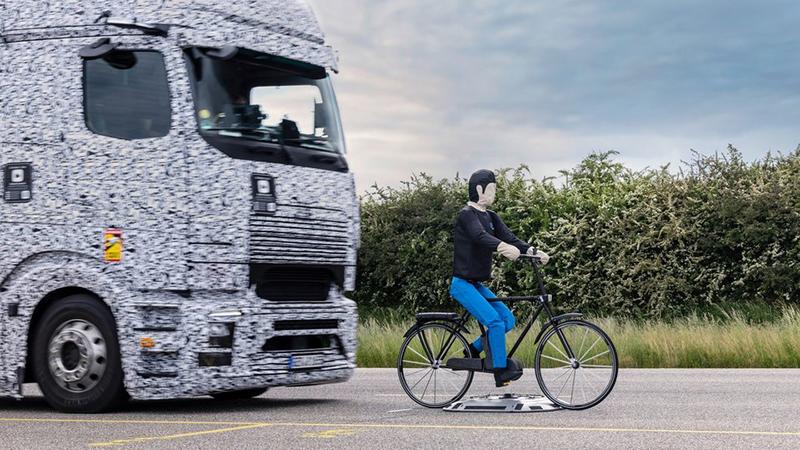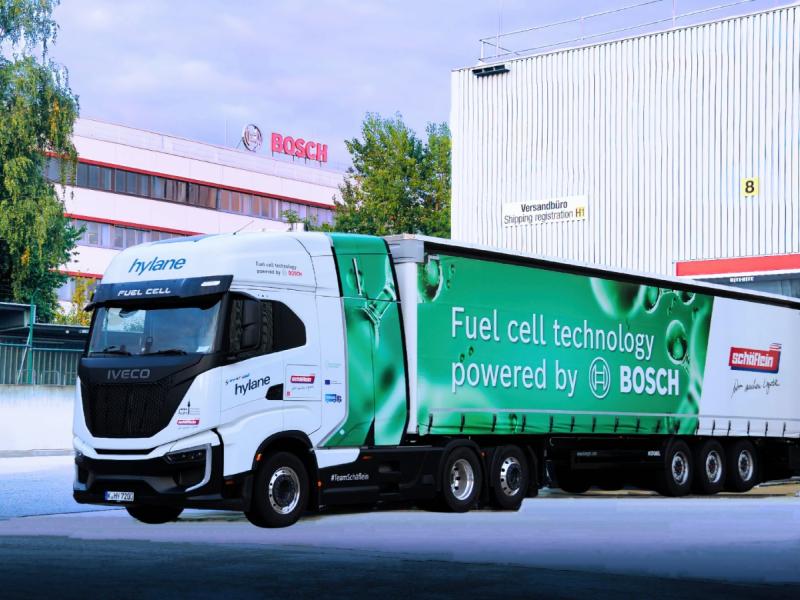Whether emergency braking at the end of a traffic jam, greater safety when turning right and changing lanes, reduction of the risk of skidding when cornering or evasive manoeuvres: With safety assistance systems, professional drivers are able to cope better with numerous sometimes critical situations in road traffic. In this respect, Daimler Truck has always been a pioneer in the industry.
Our development and test engineers have been working for decades to provide drivers with the best possible support in their work with corresponding features and thus further increase the safety of all road users.
One thing is clear: Before assistance systems can go into series production, they have to be tested extensively. Such tests are carried out throughout the year, particularly at the Development and Testing Centre (EVZ) in Wörth as well as in Finland, Spain and Japan or on our test track in Madras, Oregon. Worldwide, over 60 vehicles are undergoing endurance testing all year round. The kilometres driven to safeguard the systems from 2020 to the end of 2023 amount to around five million.
Stephan Reichle, Team Leader for Testing & Application of Driver Assistance Systems, and his employees Timo Wolf, Marc Weiss and Marcus Grejner provide insights into their work in an interview.
Who are you and what exactly are your tasks?
Stephan Reichle: I am a team leader in Wörth and responsible for the topics of system application and validation of our driver assistance systems. In the Truck Technology division, we are responsible for global software development for all Group brands, this means not only Mercedes-Benz Trucks, but also for Freightliner, FUSO and Daimler Buses. In simple terms, we are developing a platform system that is installed in all our vehicles, regardless of the vehicle brand. We all work according to the motto “All brands are my brands.”
Marcus Grejner: I’m part of Stephan Reichle’s team and there I’m responsible for testing and validating Active Sideguard Assist for Mercedes-Benz Actros and Arocs.
Timo Wolf: In the team, I take care of the applications of the long range radar of Active Brake Assist and Active Cruise Control. Similar to Marcus, my task consists of use-case-based tests on the test track, especially with regard to the long range radar and Active Brake Assist. We also test Active Cruise Control on the test track, but mainly on public roads.
Marc Weiss: In Stephan’s team, I am responsible for the reproducible testing and validation of active driver assistance functions. In concrete terms, this means that we are developing scenario-based driving procedures with the help of GPS-controlled mobile dummies, for example. This allows us to test our functions systematically and reproducibly.
As we can see in the pictures, dummies are used for cyclists, motorcyclists and pedestrians for safety reasons. What is the situation with the vehicles that you are approaching with your braking manoeuvre?
Marc: We use both dummies and real vehicles. For critical manoeuvres, we cannot use real vehicles in order not to jeopardise the safety of the drivers – and it would be far too expensive in the event of a crash. In this case, we use so-called balloon or puzzle cars. But if the test situation allows, we also use real vehicles.
Where do you mainly test?
Marcus: We use the test track in the EVZ in Wörth or also carry out the tests in part on other, external test sites if we need more space or other framework conditions.
Stephan: In winter, we often drive on test tracks in Spain because the weather there is more stable than in Germany and we can therefore test in a reproducible manner.
Why do you also test on public roads?
Stephan: The sensors of the driver assistance systems rely on interaction with the real environment. That’s why we capture numerous situations on public roads that allow us to evaluate our systems. Does the system respond correctly? Doesn’t it react too early? Or if the system has detected something and triggered it briefly even though a warning or braking would not have been necessary – we then call this “false positive”.
On test tracks, on the other hand, we stress the systems to the physical limits and beyond in order to make the systems as safe and efficient as possible. Here we check the performance of the systems. If the system did not detect an obstacle or did not detect it in time – then we speak of “false negative”
What do you like most about your job?
Timo: In our job, we don’t just sit in the office, but we go out on the road again and again, we experience the assistance systems live and can observe the progress made by the systems up to series production.
The good thing about our tasks is also that we are part of a global development network and therefore work internationally with all colleagues in Daimler Truck Development worldwide.






